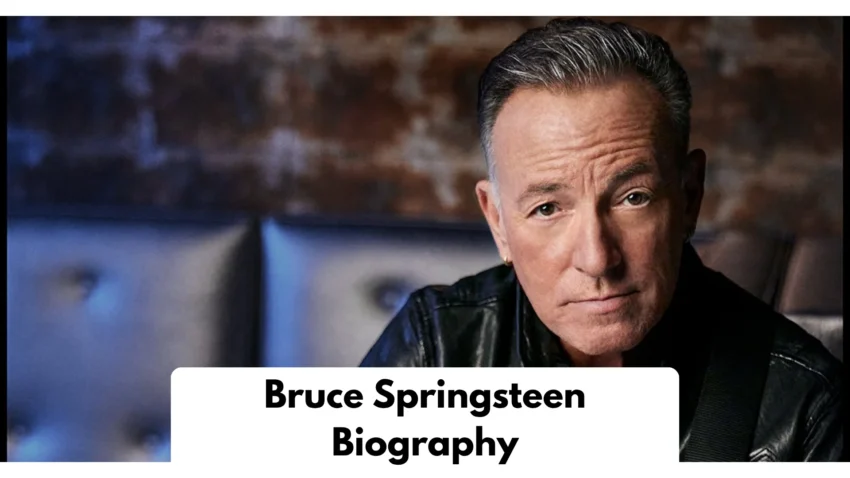Bruce Springsteen — “The Boss” — is one of America’s most celebrated singer-songwriters, known for anthemic rock, cinematic storytelling, and marathon live shows. Across a career that spans six decades, Springsteen has chronicled the hopes, struggles and grit of working-class America while building a global audience. This biography explores his early life, rise to fame, landmark albums, awards, and the enduring legacy that keeps his music relevant.
Early life and roots
Bruce Frederick Joseph Springsteen was born in Long Branch, New Jersey and raised in nearby Freehold Borough. His working-class upbringing shaped the themes that would define his songwriting: family tensions, economic pressures, small-town longing, and the search for redemption. He began playing guitar as a teen and formed his first bands in the mid-1960s, honing a tough, literate rock-and-roll voice.
Breaking through: The E Street Band and Born to Run
After two modestly received albums, Springsteen assembled the E Street Band and pushed for a bigger, more cinematic sound. The resulting 1975 album Born to Run was his breakthrough — a carefully crafted rock opera of longing, escape and gritty romance that turned critics and audiences into devotees and set the template for his stadium-ready performances. Tracks like “Thunder Road” and “Jungleland” remain cornerstones of his catalog.
Global superstardom: Born in the U.S.A. and mainstream success
Springsteen’s 1984 album Born in the U.S.A. made him a global superstar. Featuring chart-topping singles such as “Dancing in the Dark,” “Born in the U.S.A.” and “Glory Days,” the record combined muscular, radio-ready production with pointed lyrical observations about American life and sold in the tens of millions worldwide.
Songwriter, activist, and storyteller
Across albums and eras, Springsteen’s songs balance personal narrative with social commentary — from blue-collar storytelling to reflections on national tragedy. He has used his platform to advocate for working-class issues and veterans’ causes, and his concerts became communal events where storytelling and electrifying performance fused.
The Rising and a return to purpose
After years of stylistic shifts and solo projects, Springsteen reunited with the E Street Band for The Rising (2002), an album widely regarded as a mature, empathetic response to the September 11 attacks. The Rising returned Springsteen to mainstream critical acclaim and earned multiple Grammy Awards, reaffirming his ability to craft music that resonates with national moments.
Awards and recognition
Springsteen’s career has been recognized with many top honors: multiple Grammy Awards (20 wins), an Academy Award for Best Original Song for “Streets of Philadelphia,” and induction into halls of fame that celebrate his impact on popular music.
Later career, archives and recent developments
In recent years Springsteen has continued to release records, curate archival material and play large-scale tours around the world. He issued the soul covers album Only the Strong Survive in 2022 and has overseen archival box sets and expanded reissues that illuminate different chapters of his creative process. Renewed attention to his early work, including expanded reissues and film projects, has brought additional focus to his catalog in the 2020s.
Personal life in brief
Family and collaboration have been central to Springsteen’s life. He has worked closely with members of the E Street Band for decades and is married to Patti Scialfa, who sings and plays guitar with the band. Springsteen balances a demanding touring schedule with time at his New Jersey home and ongoing studio projects.
More on craft: Nebraska to Darkness — the quieter power
Springsteen’s artistry spans both the arena-ready and the intimate. The acoustic, home-recorded Nebraska (1982) stripped his music down to stark confessions and bleak character studies, demonstrating that his power as a songwriter didn’t depend on big production. Darkness on the Edge of Town (1978) moved him toward a leaner, more insistent voice after the grandeur of Born to Run.
Live legacy: marathon shows and fan connection
Known for concerts that often run three hours or longer, Springsteen treats each show like a narrative — mixing deep album cuts with crowd-pleasing anthems and on-the-spot storytelling. That approach, along with the chemistry of the E Street Band, helped build a multi-generational devoted audience.
Influence on film, theater and other artists
Springsteen’s songs have been central to film soundtracks and his life has inspired stage projects, documentaries and narrative films. His music has influenced artists across genres, and his catalog is frequently cited by younger songwriters for its clarity of character and moral intensity.
Quick discography highlights
- Greetings from Asbury Park, N.J. (1973)
- Born to Run (1975) — breakthrough
- Darkness on the Edge of Town (1978)
- Born in the U.S.A. (1984) — global bestseller
- The Rising (2002) — post-9/11 landmark
- Only the Strong Survive (2022) — soul covers
FAQs
When and where was Bruce Springsteen born?
Born in Long Branch, New Jersey and raised in Freehold Borough; his New Jersey upbringing strongly influenced his songwriting.
What is the E Street Band?
Springsteen’s primary backing group — a collective of musicians who helped shape his sound and live identity over decades.
How many Grammys has he won?
He has won 20 Grammy Awards.
Did he win an Oscar?
Yes — for Best Original Song for “Streets of Philadelphia.”
Is he still touring and recording?
Yes. He continues to release albums, curate archival releases and tour; check official channels for the latest dates.
Conclusion
Bruce Springsteen’s career is a rare combination of artistic integrity, audience reach and cultural impact. From New Jersey bars to global arenas, his songs tell stories of everyday life and persist because they speak with humanity, detail and urgency. Whether you start with Born to Run, Born in the U.S.A., or Nebraska, you’ll find work that rewards repeated listening and reveals more with every play.
